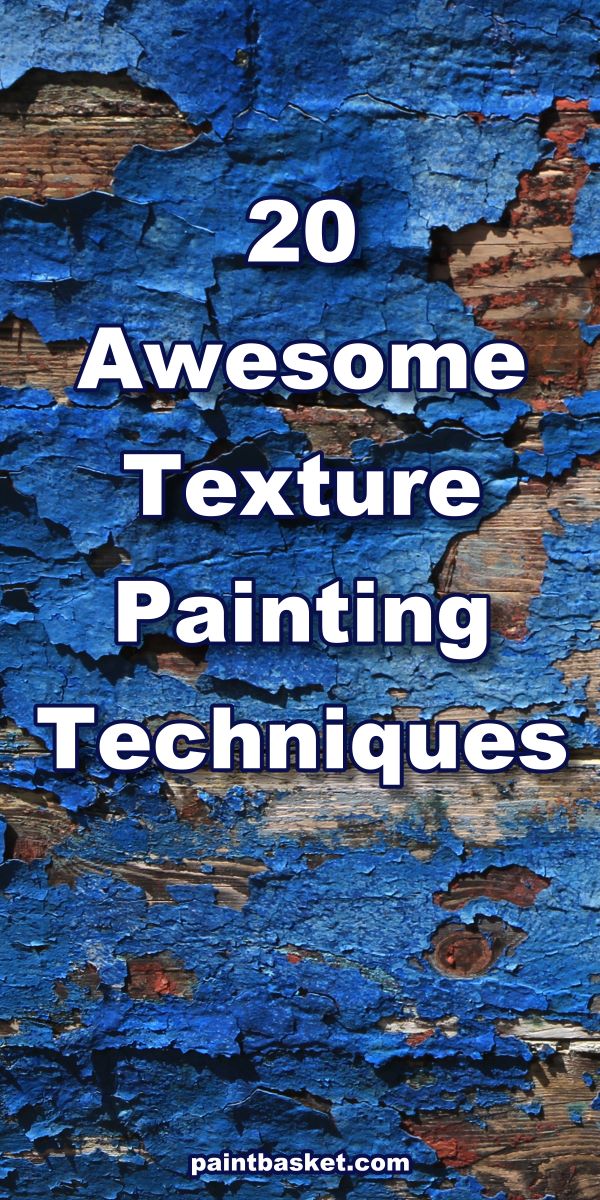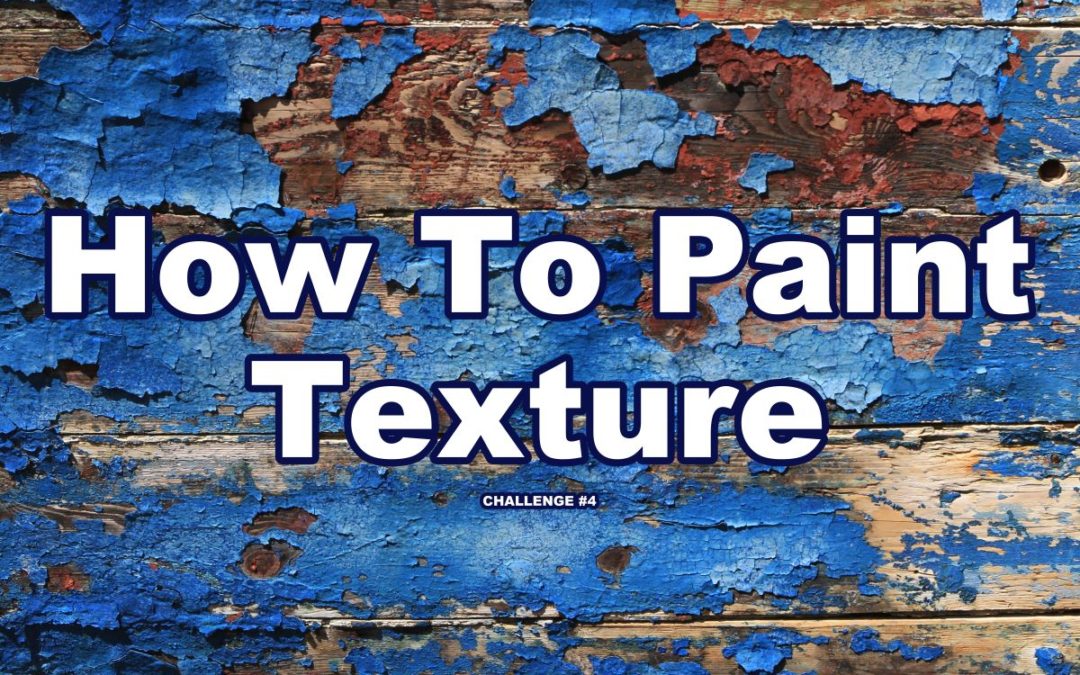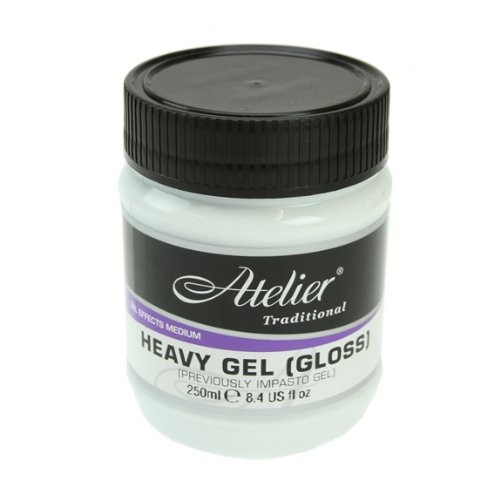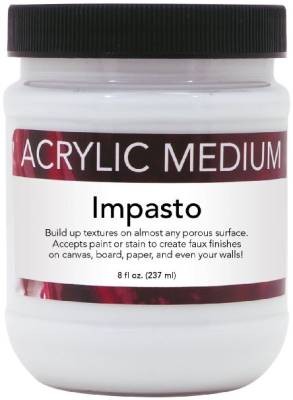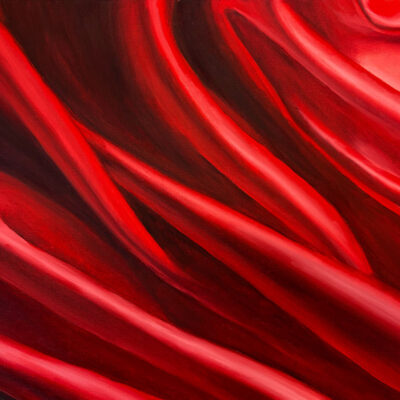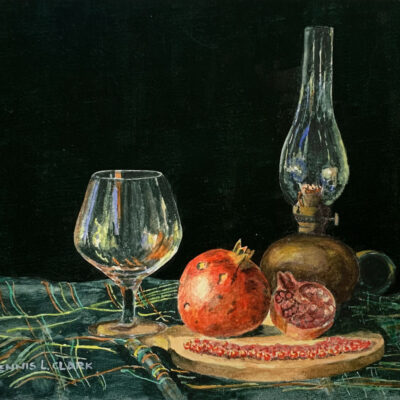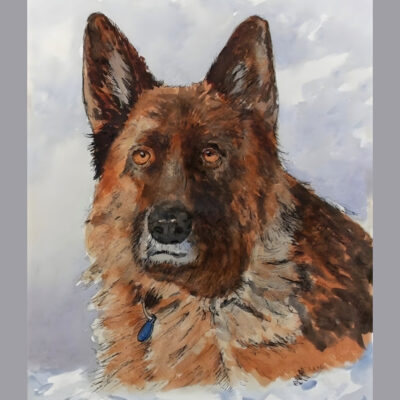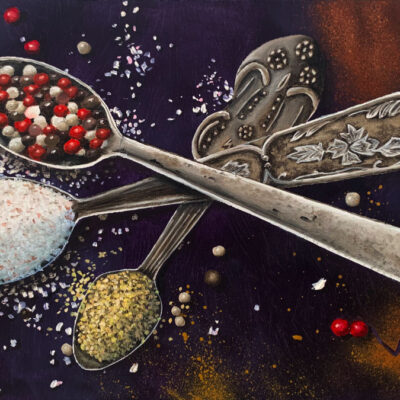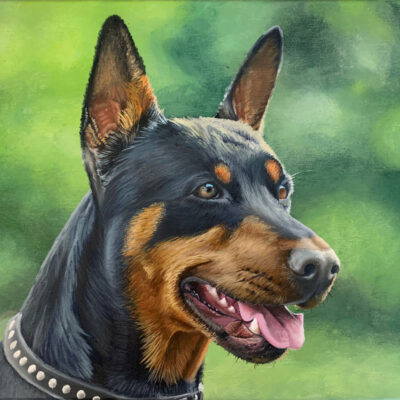Challenge Tutorial
In this challenge tutorial you will learn about adding texture to your paintings.
Two Types of Texture
There are two types of textures: Actual texture and simulated texture.
I am sure you can already tell which is which, but let’s look at them individually anyway.
Actual Texture
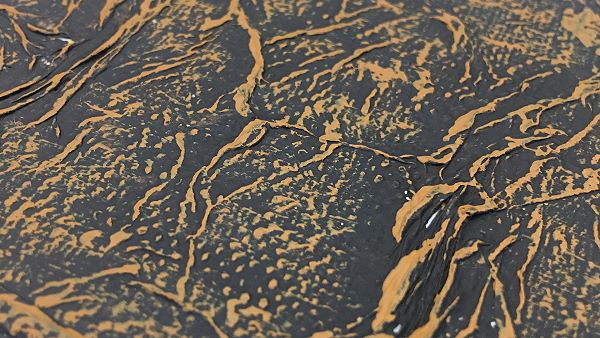
Actual texture is a genuine three-dimensional texture on your canvas. Most times this texture will have height off the canvas surface which you can feel.
The light will affect how you see the texture. If the light is from the front, the texture will appear flat and often invisible. The more you move the light to the side the stronger the texture will appear.
Simulated Texture
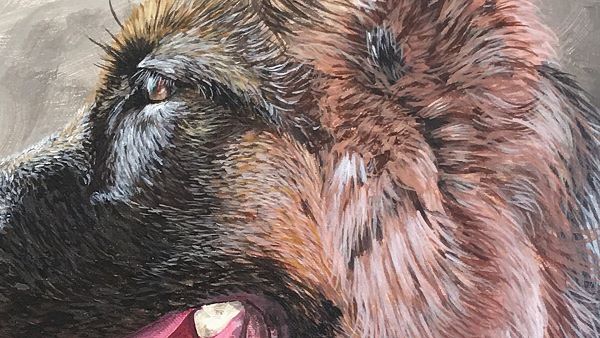
A simulated texture on the other hand is merely an illusion. You are using brush strokes, colour and tonal value to trick the eye into thinking it can see a texture on a flat surface.
Why Do We Need to Paint Texture?
There are many reasons why you would want to add texture to your paintings.
The most common one is to create a realistic effect or look.
Adding an actual texture can add depth to your artwork as the image now protrudes off the canvas.

You can use it to add an extra, often unexpected, dimension to your painting as you can see here with the addition of printed paper on the canvas.
You can even use texture to convey mood and feeling in your paintings.
A smooth surface would for example convey a restful mood.
A rough surface can convey hardship or a busy mood.
A pattern can convey a sense of rhythm and so on…
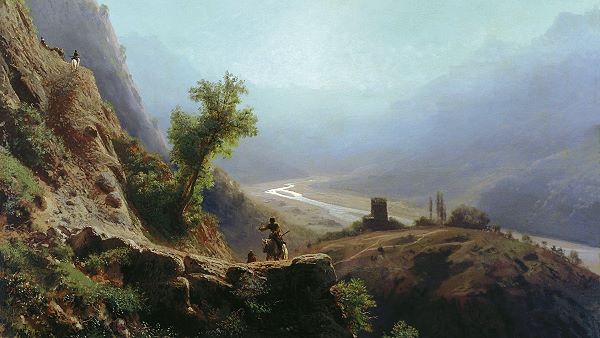
You can use texture to convey a sense of distance in the painting. You keep objects that are far away smooth and flat, gradually adding more and more texture as you move forward in the scene with the focal point having the most texture and height off the canvas.
As you can see adding texture to your paintings opens up so many possibilities for you to make your artworks much more appealing to look at.
I am now going to show you 20 practical ways to create texture on your canvas.
20 Texture Painting Techniques
If you would like to work along, you will need a 16 by 20 inch canvas.
The paints I will be using our mars black, titanium white, pthalo green, yellow ochre, raw umber, cadmium yellow and cerulean blue. For this exercise I will be working in acrylic paint. You are welcome to follow along in oil paint as well.
The brushes I will be using are a rigger brush, soft filbert brush and medium-sized bristle brush. I have also used a medium-sized painting knife.
You will also need a small bottle of isopropyl alcohol, a tub of texture gel, a tub of texture paste, a small square of material, sand and some organic material like twigs.
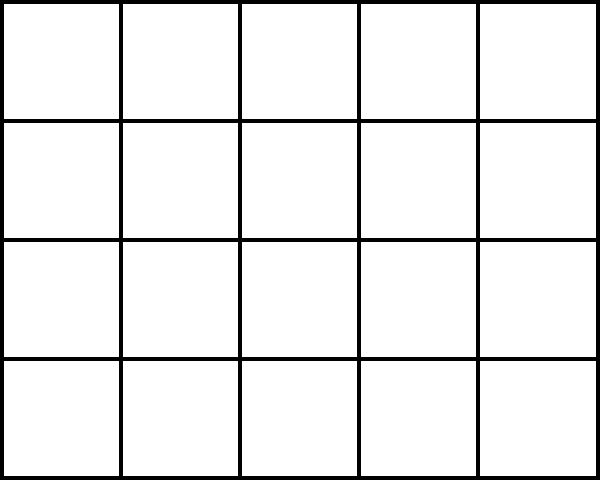
Go ahead and divide your canvas up into 4 inch squares giving you 5 columns across and 4 rows down. I have used thin strips of masking tape as my divisions. That way I can remove the masking tape afterwards to reveal 20 neat squares with texture in them. You could of course just draw lines to separate your blocks.
We will start off by creating some simulated textures.
Technique 1 – Hatching
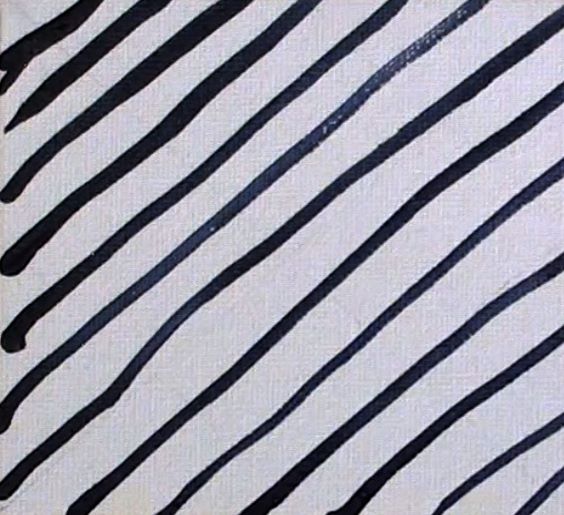
The first technique we will look at is hatching. If you add an even, equidistant hatching over the surface you will get an even texture as you can see above. To do this I have used mars black and a rigger brush. The paint was thinned down to the consistency of an ink. The lines are painted with long flowing parallel strokes.
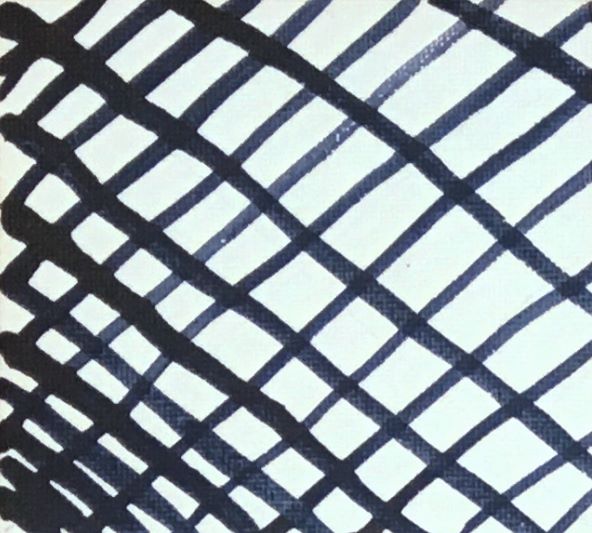
You don’t however always need to hatch your lines equidistant You can vary the distance between hatches to create a tighter or looser texture. Here you can see how you have a darker, tighter texture in the bottom left hand corner and a lighter, looser texture in the top right hand corner.
To paint the varying hatch lines I have started in the bottom left-hand corner painting the lines very close to each other. Each subsequent line is slightly further away from the previous.
Technique 2 – Line Weight
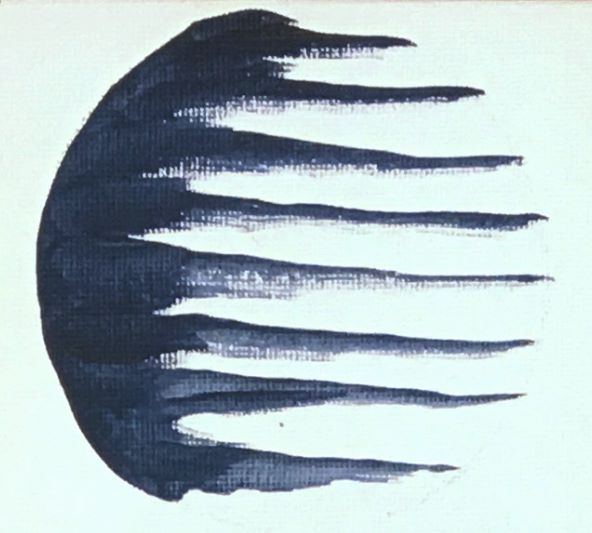
The thickness of a line is called it’s weight. The thicker the line, the more weight it has. In this exercise I have used a pair of compasses to draw a light circle inside the second block. We will draw our lines horizontally inside this circle, so lightly draw in a few horizontal parallel lines across the inside of the circle.
To paint the lines I am going to use a soft filbert brush and the same thinned black paint from the hatching. On each line, starting at the left with the filbert brush held with its broad width on the canvas, paint a line towards the right, rotating the brush in your hand as you go so that by the time you reach the right hand side of the circle you have turned the brush 90 degrees. By the time you reach the right hand side of the circle you should be using the chisel side of the hairs.
This will make the line go from thick to thin or put correctly go from a heavy line weight to a light line weight.
For fun I have also filled in the left hand side of the circle so that we end up with a shading from dark on the left to light on the right. As you can see this gives us quite an interesting texture.
Technique 3 – Contour Lines

Contour lines follow the contour of an object. When viewed from the side these lines are actually parallel to each other. Viewed from the top however reveals the true contour of the object.
For this exercise we will draw an imaginary object so using the rigger brush, draw a short random line somewhere near the middle of the block. Now draw a contour around the object varying the contour slightly. I have made my contour line close to the original line on one side and further away on the other side. Repeat this until the entire block is full as you can see above.
The closer the lines are together, the steeper the incline. The further the lines are, the shallower the incline of the object.
Obviously your contour lines do not need to represent an object, they could represent energy lines or simply be abstract lines forming a texture on your canvas.
Technique 4 – Shading
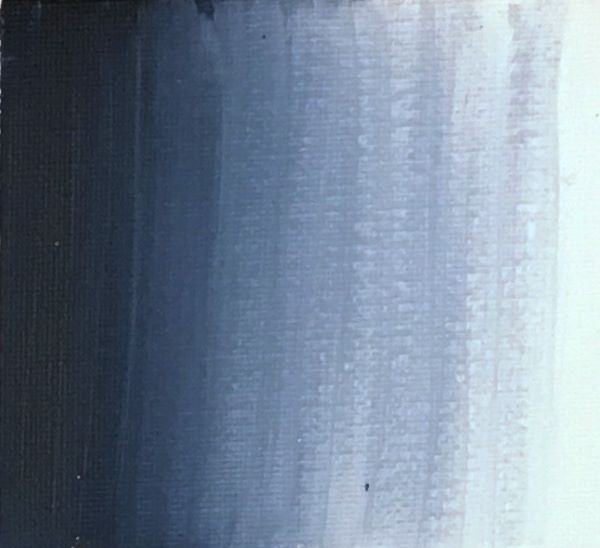
I have no doubt that you have done this technique many times before. Using the soft filbert brush and mars black I will start at the left gradually shading towards white on the right.
Shading gives us a smooth texture so if you want to represent a smooth surface, shading is the way to go.
Technique 5 – Splatter
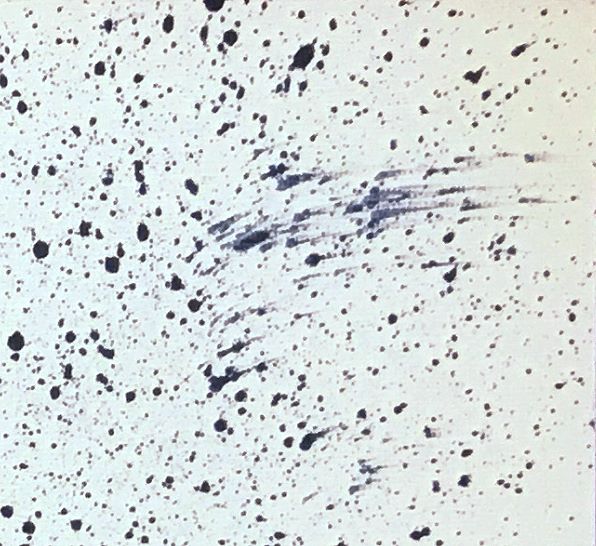
To do splatter correctly thin your paint down to the consistency of water. Then use a bristle brush and your finger to flick the paint off the brush towards the canvas. The thinner your paint the larger the dots. The thicker the paint, the smaller the dots.
Splatter can represent stones, rocky texture, stars and so on.
If you smear the splatter you can get an even different texture.
Technique 6 – Random Lines
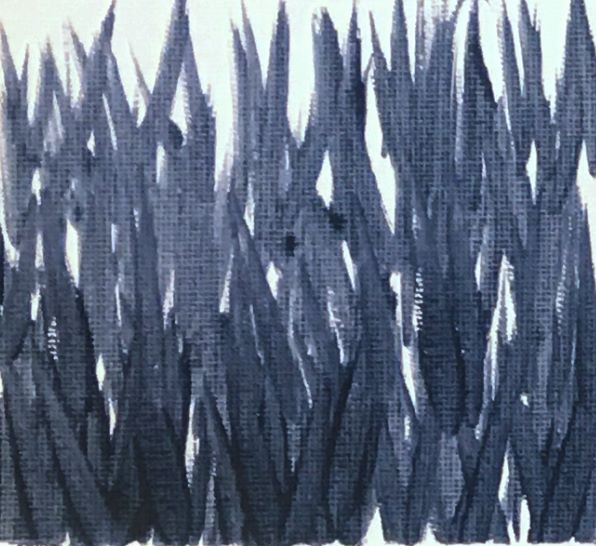
Using your filbert brush and the chisel side, flick lines upwards. This gives you a grass texture. You can now layer these flicks over each other to form a woven or hair texture. The closer the flicks are to each other the darker the tonal value. The further the flicks are apart, the lighter the tonal value. In other words you can even get a bit of a shading using the flicks.
Technique 7 – Sgraffito
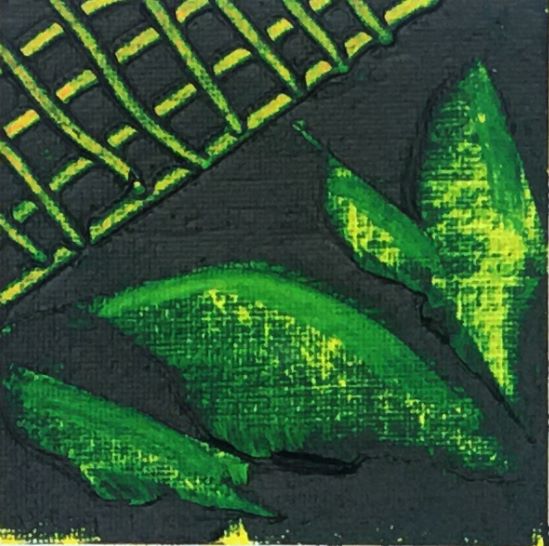
Fill in the block with a thin layer of cadmium yellow and dry it off. Now using pthalo green and your painting knife add a layer of paint over the yellow. This layer can be reasonably thick.
Sgraffito is a technique where you scratch into the top layer to reveal the layer underneath. In this case we are scratching into a top layer of paint to reveal the layer of paint underneath. To scratch into the top layer I will use the back of the filbert brush as well as scrape off some of the paint using my knife. You can see what a nice effect this gives us above.
Technique 8 – Resist

As with technique 7, fill in the next block with yellow and dry it off. Thin down your pthalo green to the consistency of water. Paint a layer of this over the yellow. Now using a dropper, drop a few drops of isopropyl alcohol onto this green layer of paint. As the water and alcohol resist and repel each other, the paint is taken with it revealing the yellow underneath.
This technique can give us very interesting organic textures. There are many different ways of creating a resist effect. In this case we have used isopropyl alcohol. There are also different techniques using wax and silicone.
Technique 9 – Dragging
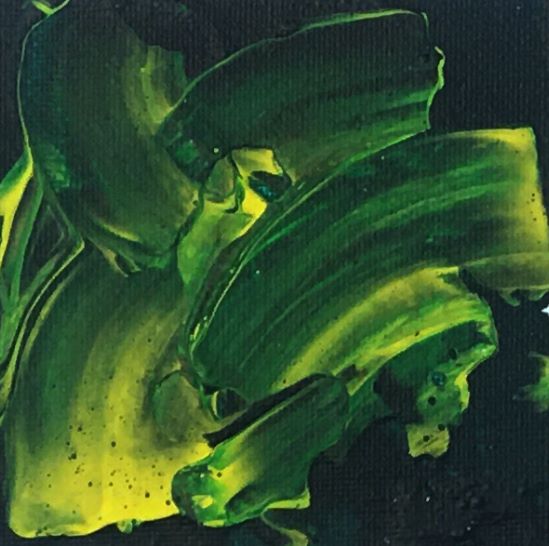
Thin your pthalo green down to the consistency of cooking oil when using your painting knife fill in the next block. While this paint is still wet, thin down some cadmium yellow to the same consistency. Now carefully scoop up this paint and drip it into the centre of the green block. You can now use the knife or a brush to drag the yellow over the green. In places the two colours will mix giving you some interesting textures. This technique works very well for painting rocks.
Technique 10 – Layering
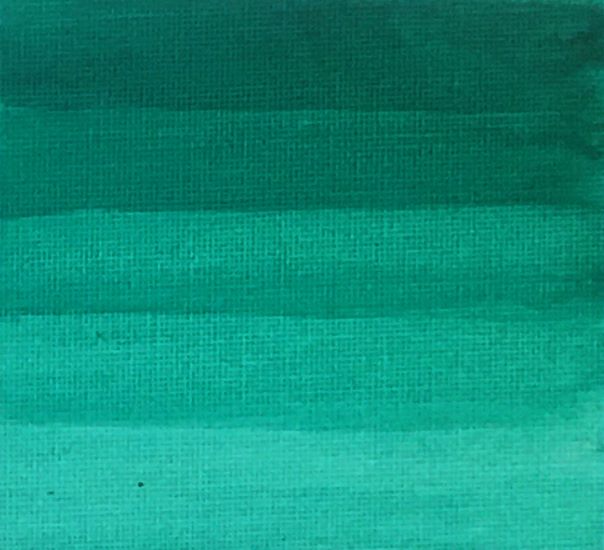
This technique works best with transparent paint.
You can tell whether your paint is transparent by looking on the tube. There should be a circle or square icon on the tube. If the icon is empty on the inside then the paint is transparent. If the icon is half filled / half empty then the paint is semi-transparent. If the icon is filled in, then the paint is opaque.
Thin down some pthalo green to the consistency of water. Using your filbert brush block in the next block with a thin layer of this paint. Dry the block of paint off thoroughly. Repeat the process leaving a section at the bottom of the block empty. Dry off this layer of paint thoroughly. Repeat the process three more times. You should now have 5 bands of increasingly darker colour across the block.
In other words you have just used transparent layers to get textures of varying tonal value.
Technique 11 – Paint with Odd Items

You don’t always need to use a brush in order to paint with. You can use any object you can think of to paint with. Each object will give you a different texture on the canvas.
For this exercise I am going to use some cling wrap from the kitchen. I will cut off a length and roughly crumple the wrap up.
As previously, block in with yellow and dry it off. Now dab the cling wrap into green paint and gently tap over the yellow block of paint. As you can see this gives a really nice rough texture which could easily be used for foliage or rocks.
Now let’s move on to some actual textures.
Technique 12 – Texture Gel
Texture gel can be purchased from your local art store. It looks like white acrylic paint but on drying it turns transparent.
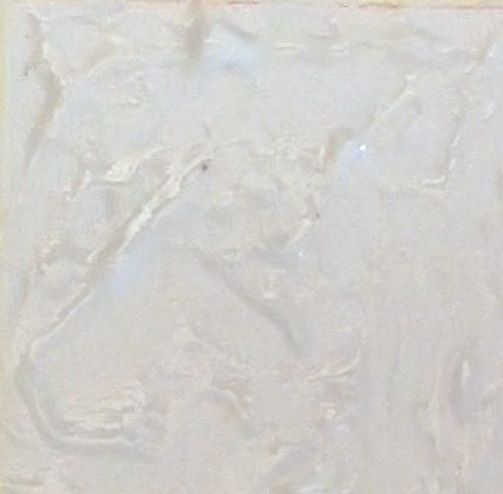
You can use this gel on the canvas to create texture and height off the canvas. You can dab dollops of texture gel onto the canvas using your finger. You can even drag lines and shapes into the gel to represent whatever will be at that spot in the final painting.
Before painting over the gel you need to dry it off thoroughly. This can take quite some time to air dry so I often use a hair dryer to speed up the process. Even then it can take long so you do need to be patient.
You can tell when the gel is dry by gently pressing on the highest peaks. If they have no give in them then the gel is dry. The gel will also have gone from white to transparent.
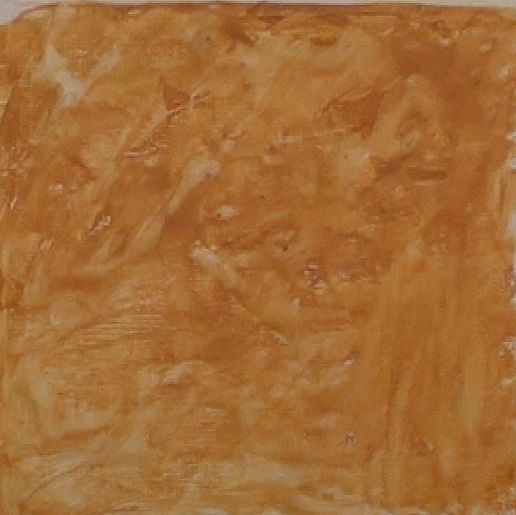
I like to place a layer down on the canvas in the place where I need the texture to be, dry it off and then coat the area with a neutral layer of paint. In this case I have used yellow ochre.
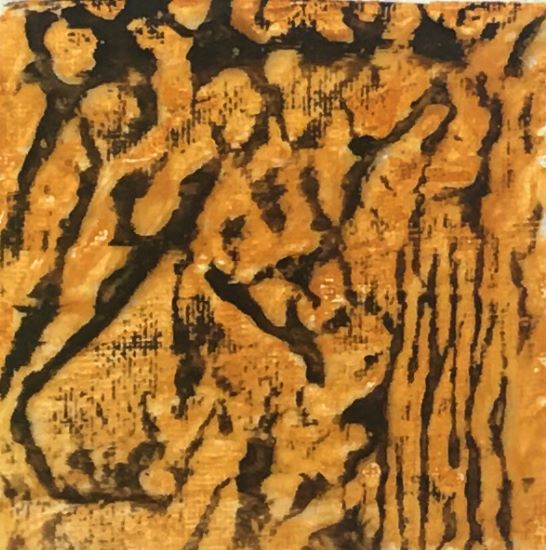
In order to show up the height of the texture even more I will use a contrasting colour, in this case raw umber, to highlight the peaks.

You do this by placing a thin layer of paint on your brush then holding the brush in the tips of your fingers as shown above, you gently drag over the texture gel with the paintbrush held as flat against the canvas as possible. The paint can then only adhere to the peaks and cannot get into the valleys, revealing the texture.
This is an incredibly easy way to paint a tree texture.
Technique 13 – Texture Gel with Serviette
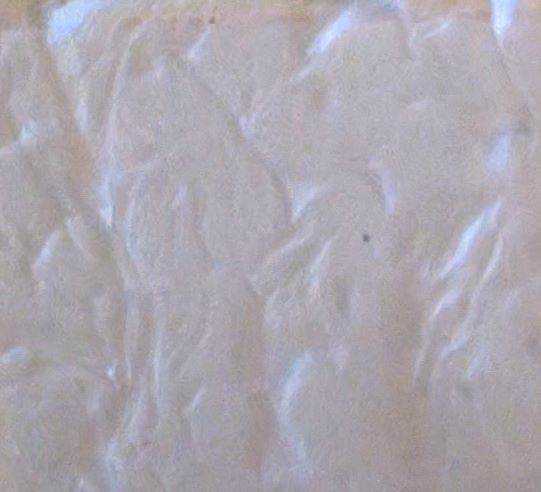
To create the next texture we’re going to use a serviette so coat the block of canvas with a thin layer of texture gel then fold open the serviette entirely and place it over the wet gel.
As you press the serviette down into the gel use your fingers to crumple the paper. You can crumple it a little bit or you can crumple it a lot depending on the effect you want to create.
When you are happy with the effect, use the hair dryer to dry the texture gel.
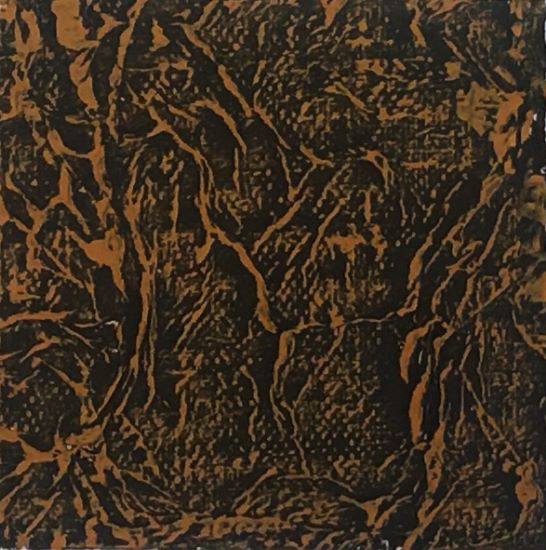
In order to paint over the serviette you would want to seal it. To do that use a soft brush like the soft filbert to give it a gentle but generous coat over the top. Dry this layer off as well before painting over it.
I have coated mine with a layer of raw umber, used the hair dryer to dry the paint, then used yellow ochre to coat the peaks of the texture as we did in technique 12.
Technique 14 – Fabric for Texture
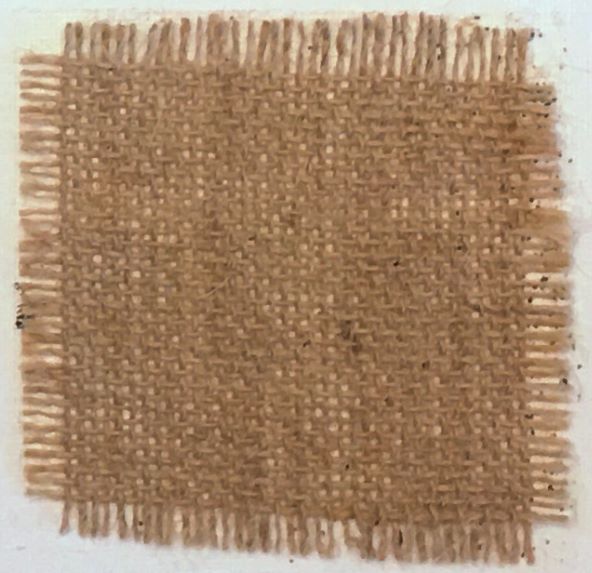
Here I am going to use some hessian, you might also know it as burlap or jute, and stick that down onto the canvas using texture gel.
You get many different types of fabric which you can add to your canvas that will give you fabulous textures and looks. I particularly like adding hessian because of the nice rough texture you get.
As with the serviette you can leave it as is, or if you want to paint over it, seal it with more texture gel.
Technique 15 – Sand as Texture
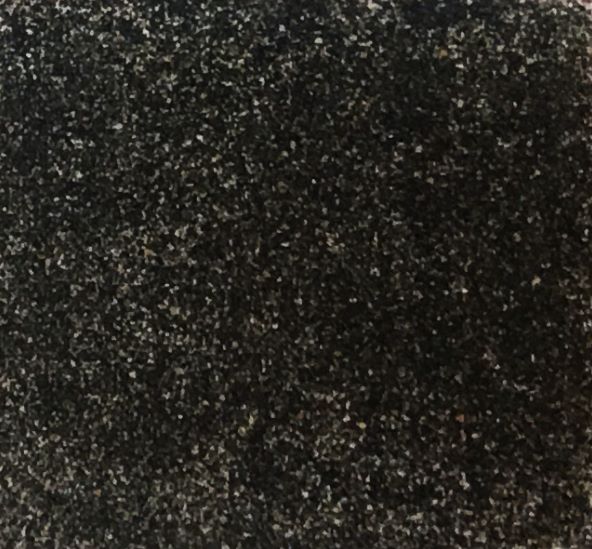
I am going to use sea sand and adhere that to the canvas using texture gel. The sand gives a nice intermediate texture to the canvas. In this fashion you can create a seascape painting using actual sea sand as you can see below.
You could of course do the same for landscapes using garden sand.
To apply the sand I add a coating of texture gel onto the canvas then sprinkle a liberal amount of sand over the gel. Gently press down on the sand to embed it into the gel, then gently shake or wipe off the excess sand.
When the texture gel has set I will usually add a second layer to avoid the sand rubbing off.
Technique 16 – Texture Paste
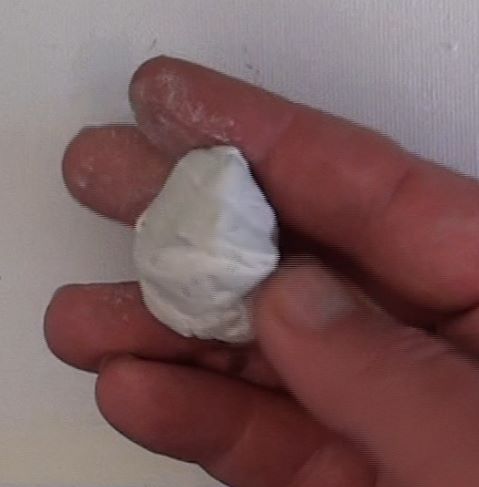
Texture paste differs from texture gel in that it is a lot more solid and clay like. You can sculpt and mould texture paste to create all sorts of interesting shapes and textures on the canvas.
You can purchase texture paste from your local art store. I however use an alternative texture paste. This is purchased from your local hardware store and is used to fill cracks in the wall around the house. You can see the tub that I use below.
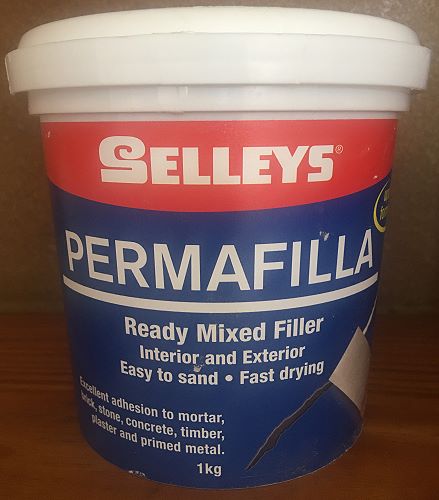
This is however my local brand so you will probably not be able to purchase this particular brand. You will need to experiment with what is available at your hardware store to find out which one works the best. I do find that you get grey, yellow and orange coloured crack filler. For me the grey one tends to work the best.
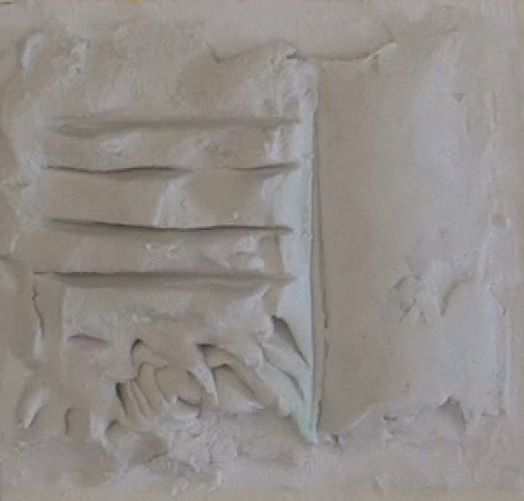
You can apply the texture paste to the canvas using your hands or a knife. You can sculpt and mould it using any tool available to you. Be imaginative and you will be able to come up with some amazing textures.
If you want to smooth out the surface dampen your finger and gently rub over the paste.
Here I have created a smooth area as well as use the knife to add dabs and jabs in another area.
The texture paste also takes quite some time to dry so I usually dry it with a hairdryer until it has formed a skin on top. I will then leave it overnight to fully set.
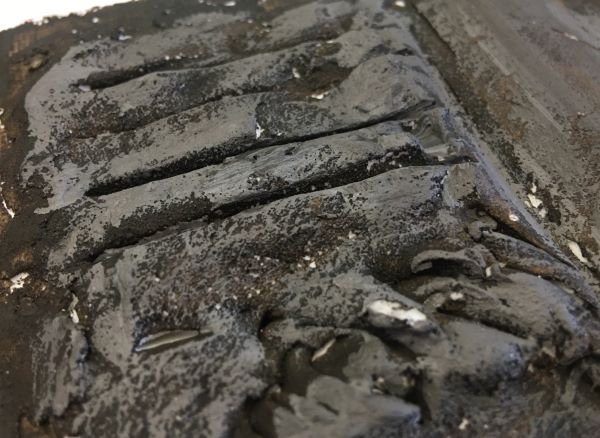
Once fully set you can further scratch and sand into the paste to refine your texture. You can also continue to build on top of the dry texture paste with more texture paste. I will often built up to a height of around 3 to 5 cm.
As with the texture gel, you can apply paint over the dry texture paste.
Technique 17 – Organic Materials
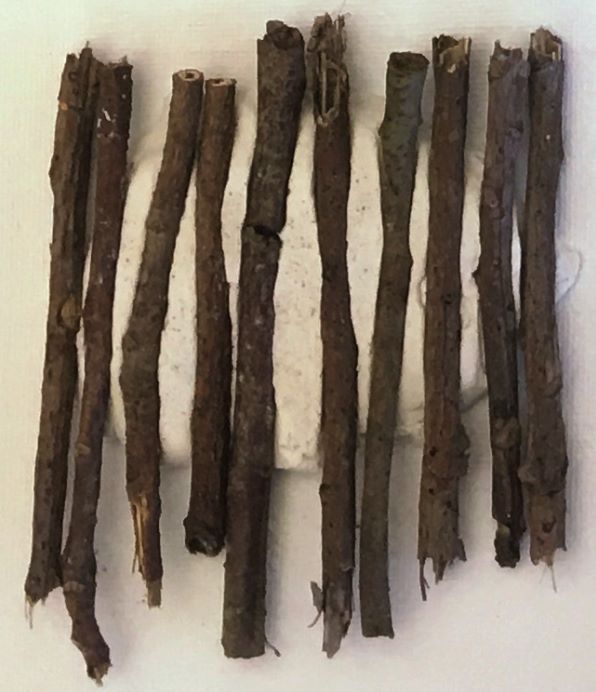
Especially when you are working in collage you often want to stick larger objects onto your canvas. In this case the texture gel doesn’t work nicely. The texture paste however works a treat. Here you can see how I have placed a large blob of texture paste onto the canvas and then use that to adhere sticks onto the canvas.
In this way you can stick almost any object onto your canvas. Feathers, grass, stones, driftwood, you name it.
Technique 18 – Brush Impasto
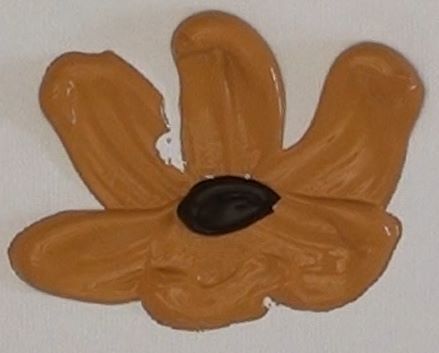
You don’t need all sorts of fancy tools and pastes to create actual texture on your canvas. Simply applying your paint thick using the brush can also give you interesting textures.
Here you can see how I have painted a flower using very thick paint. To do this I scoop up the paint on the brush as you can see below:
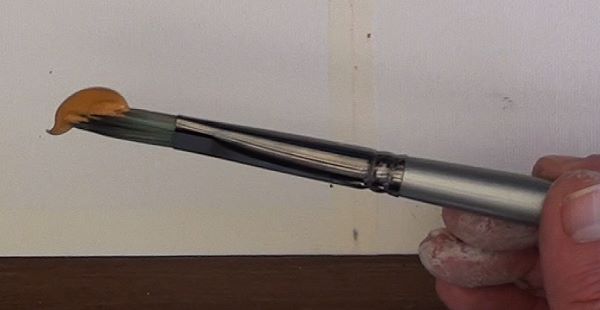
When working like this you can actually get two textures for the price of one because you have the height off the canvas due to the thickness of the paint but also the stripes inside the paint due to the bristles of the brush.

Just remember though that when working with standard acrylic paint some of this height and texture will slump as the paint dries. This will however not happen with oil paint or when using heavy body acrylic paint.
Technique 19 – Knife Impasto
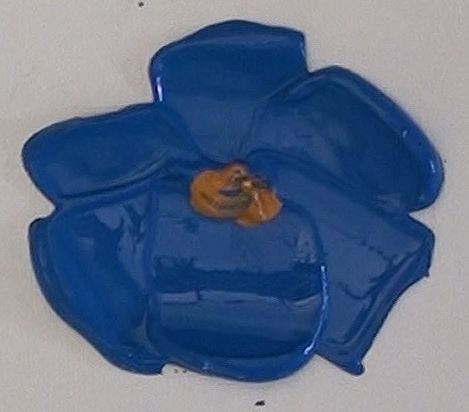
In the same way as brush impasto you can also paint using a painting knife. In fact the knife can give you more height off the canvas than the brush can.
As you can see from the image above the texture is however a lot smoother than the brush. Having laid the paint down on the canvas though, there is nothing stopping you from scratching into the paint to add additional texture.
In this way you can create entire paintings using only the painting knife.
Technique 20 – Metallic Paint
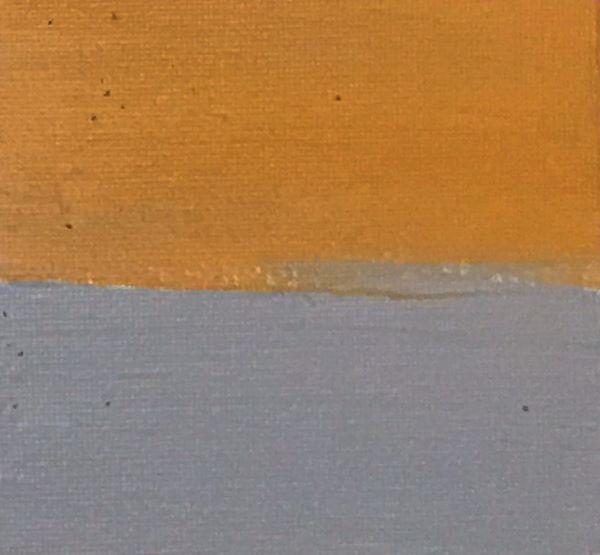
The final technique we will look at in this tutorial is using metallic paint. Metallic paint differs from regular paint in that it has actual metallic particles suspended in the paint giving it a beautiful iridescent shimmer.
This is often a texture that artists overlook so it gives you the opportunity to make your artworks stand out by adding some shimmer to your paintings.
As you can see the texture you do get is however flat so just bare this in mind when planning your artworks. If you need to get a three-dimensional effect using metallic paint then paint a layer of metallic paint, dry it, then paint over that to add the highlights and shadows. Alternately build up the dimension using texture paste, then paint the metallic on top.
You get various different metallic colours like silver, gold and bronze.
For interest sake, this is what my completed canvas looks like:
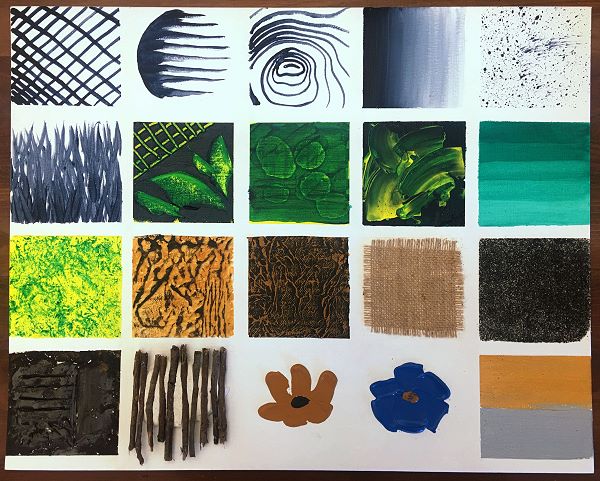
We will conclude our series of texture painting techniques here so now it’s time for your challenge.
Your Challenge
Your challenge is to use an actual as well as a simulated texture in one painting. Your painting can be any subject under the sun as long as it has both these texture types in it.
Are you up for the challenge?
I know you are!
Post your challenge artwork on the forum. You can click the button below to go to the correct place on the forum.
Good luck, I look forward to seeing your artwork.
Tip
If you are not a member yet, you can join for free by signing up to our mailing list below.
You will then get a coupon code to unlock any class on the site for free as well as get lifetime access to the forum and the challenges.
